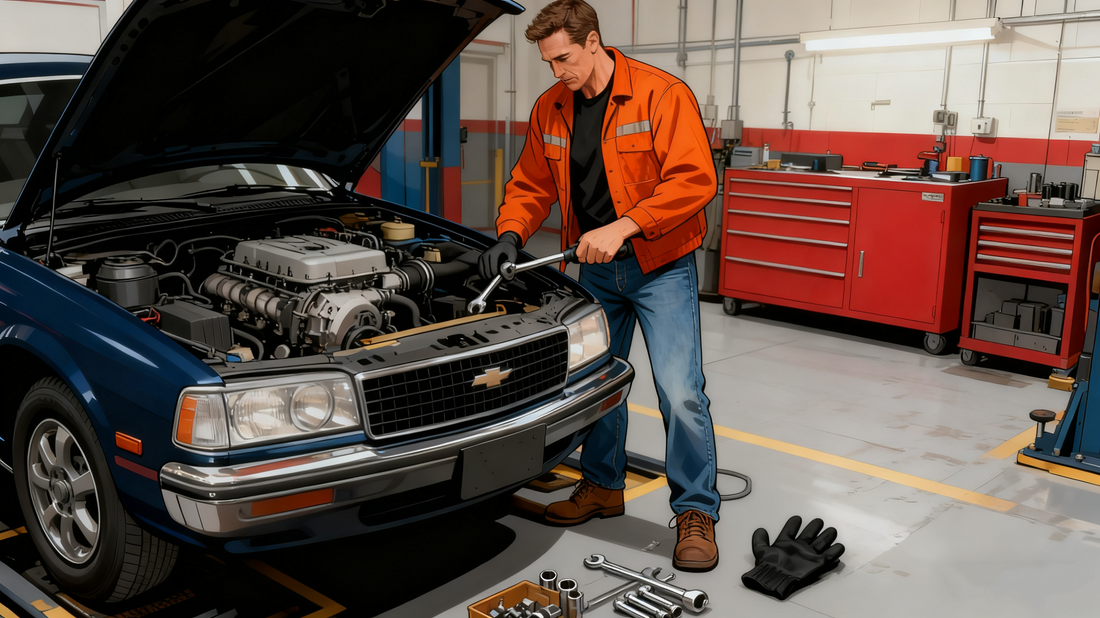
Mastering the Torque Wrench: Usage and Maintenance Tips
Mastering the Torque Wrench: Usage and Maintenance Tips
A torque wrench is an essential tool for achieving precision in mechanical work — from tightening bolts on your car engine to assembling bicycles or machinery. Yet, many users fail to unlock its full potential simply because they overlook proper usage and maintenance. In this guide, we’ll help you master the torque wrench, ensuring it stays accurate, reliable, and long-lasting.
1. Why Torque Accuracy Matters
Torque is the rotational force applied to a bolt or nut. Using the correct torque value ensures that fasteners are neither too loose nor too tight.
- Under-torquing can lead to parts coming loose, leaks, or even mechanical failure.
- Over-torquing can strip threads, break bolts, or deform components.
A calibrated torque wrench ensures every fastener is tightened to the manufacturer’s specifications, keeping your equipment safe and performing at its best.
2. Using a Torque Wrench Correctly
Step 1: Set the Desired Torque
Adjust the torque setting according to the manufacturer’s specifications. For digital torque wrenches, simply use the up/down buttons and confirm the value.
Step 2: Apply Slow, Steady Force
Place the wrench on the fastener and apply force smoothly until you hear the “click” (for mechanical types) or see the alert on your digital display. Avoid jerky or rapid motions.
Step 3: Never Use It as a Breaker Bar
Torque wrenches are precision tools — not designed to loosen tight bolts. Using them as breaker bars can damage internal mechanisms.
Step 4: Always Return to the Lowest Setting
After use, reset the wrench to its minimum torque setting to relieve tension on the internal spring. This prevents calibration drift over time.
3. Maintenance and Care Tips
Keep It Clean
After each use, wipe the wrench with a dry or slightly damp cloth. Avoid using solvents that may damage the finish or internal parts.
Store Properly
Always store your torque wrench in its case, away from moisture, dust, or direct sunlight. A stable environment helps preserve accuracy.
Recalibrate Regularly
To ensure precision, your torque wrench should be calibrated at least once a year or every 5,000 cycles of use — whichever comes first. A professional calibration service can adjust internal mechanisms to restore factory accuracy.
Handle with Care
Avoid dropping or hitting the wrench. Even a small impact can throw off calibration or damage sensors in digital models.
4. Choosing the Right Torque Wrench
Different jobs require different torque ranges and drive sizes:
- 1/4” drive: Ideal for bicycles, small engines, and electronics (1.5–30 Nm).
- 3/8” drive: Common for automotive repairs and general mechanical work (5–100 Nm).
- 1/2” drive: Suitable for high-torque tasks like suspension, lug nuts, or heavy machinery (up to 300 Nm or more).
Digital torque wrenches, such as those from Uharbour, offer enhanced precision, multiple measurement modes, and easy-to-read displays — making them perfect for both professionals and DIY users.
5. Final Thoughts
A torque wrench is more than just a tool — it’s a precision instrument that ensures safety, performance, and quality in every project. By following proper usage and maintenance practices, you can extend its lifespan and maintain confidence in every click.
Whether you’re tightening a delicate bicycle bolt or working on an engine rebuild, mastering your torque wrench means mastering precision itself.
